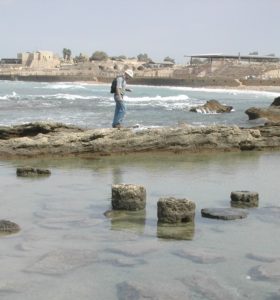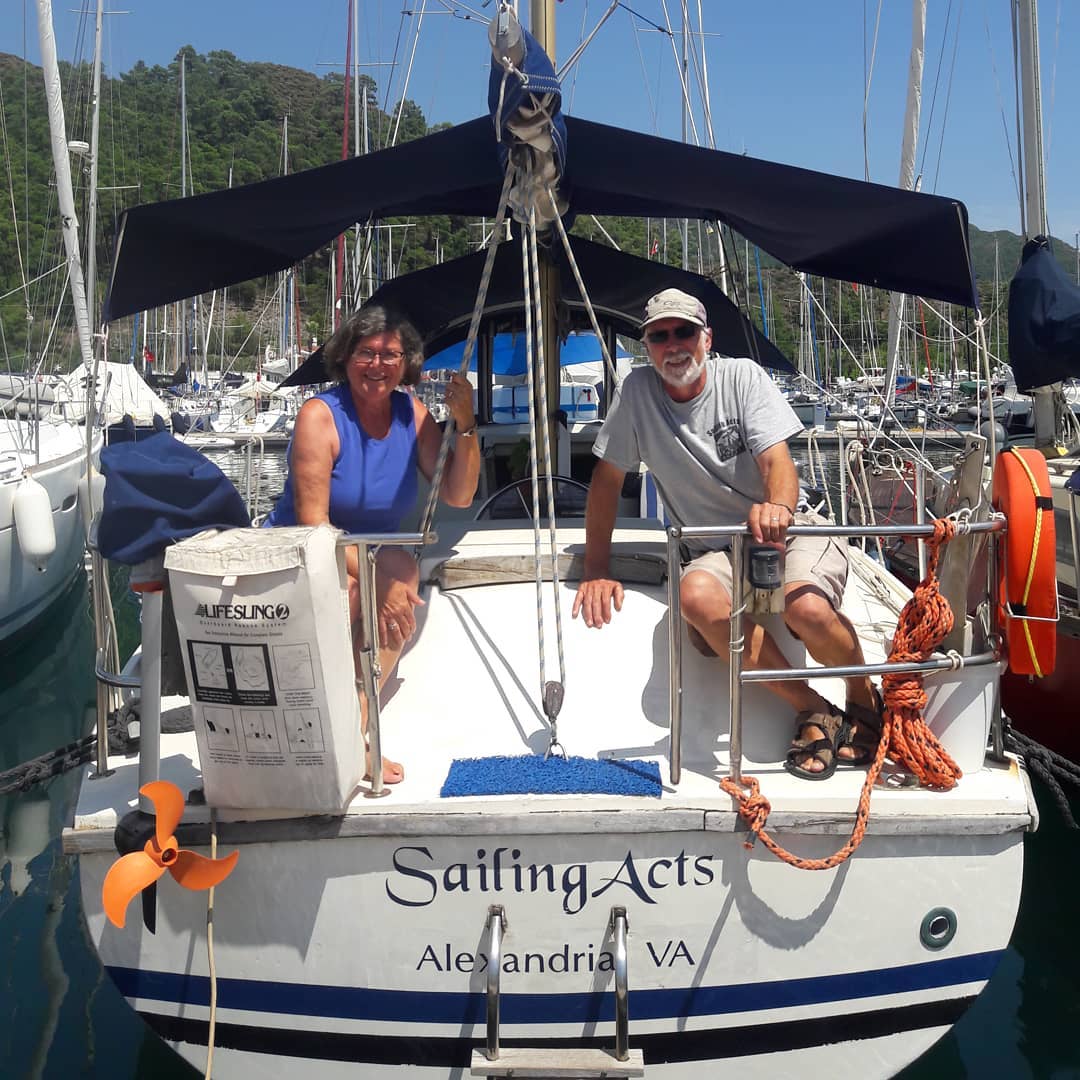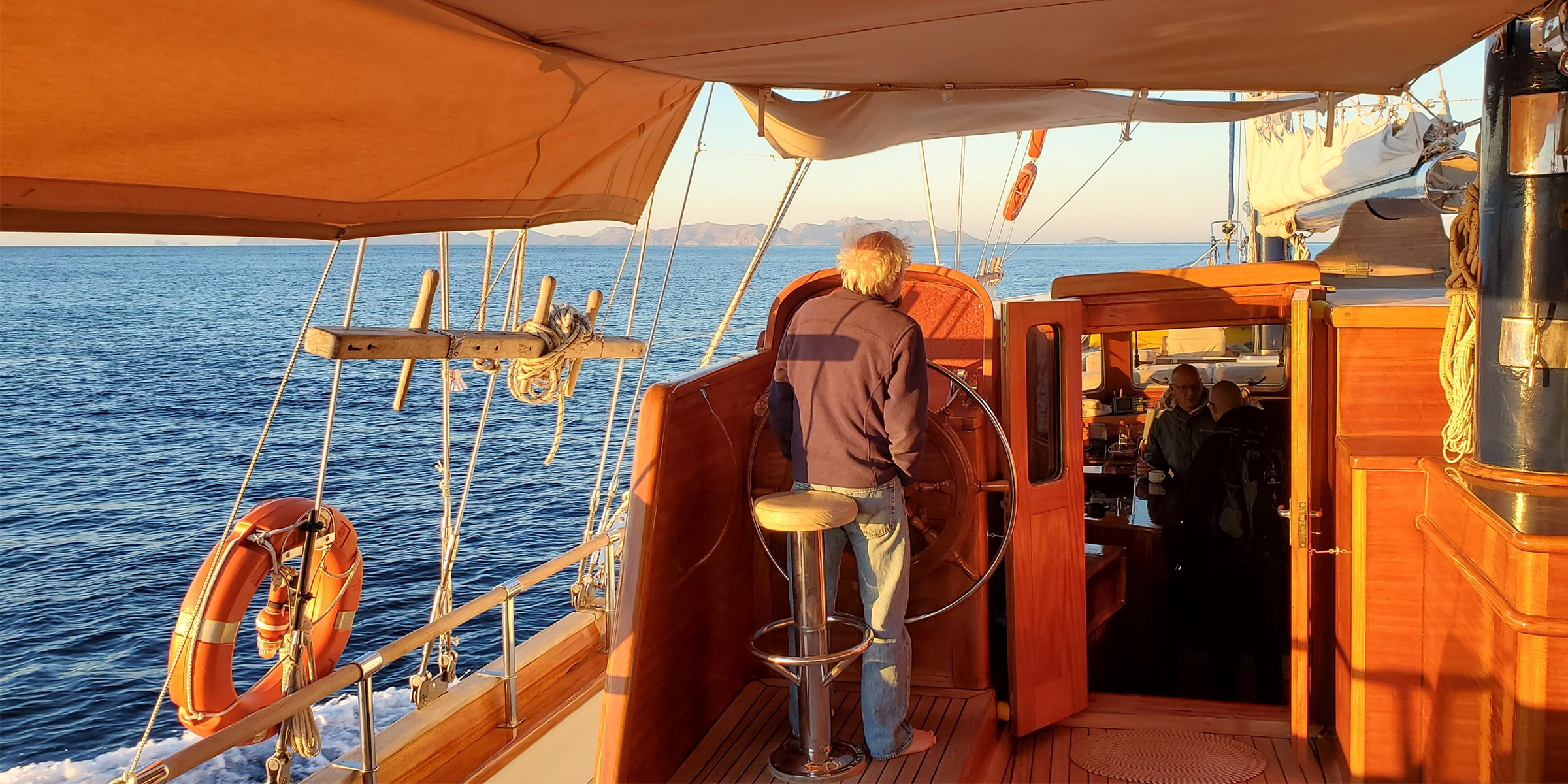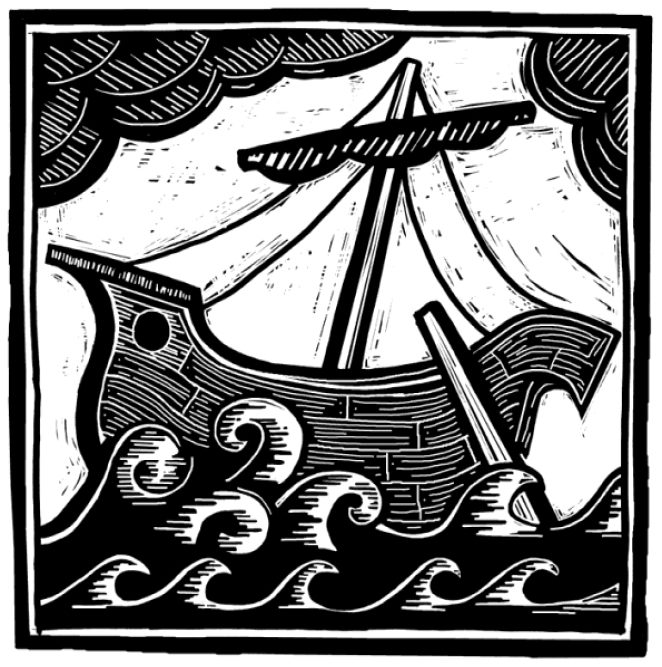The Plan
Exploring the ancient harbor in Caesarea, Israel from which Paul departed on his journey to Rome, I wondered what that must have been like for Paul. He had waited 2 years in the prison at Caesarea following his appeal for a hearing before the Caesar. Now he was actually leaving to face his trial. Would he be acquitted? Executed? What would that uncertain and dangerous journey be like, I asked myself? And suddenly, a small voice inside my head seemed to state very clearly: “There is only one way to find out.” And so, I decided to sail with Paul from Caesarea to Rome, visiting every city and port mentioned in all of Paul’s journeys in Acts.
So, over the following 2 years began to plan and prepare for a sabbatical that would begin in May 2004 and end in late summer 2005. The dream, then the plan, became reality. For 15 months my wife Janet and I sailed the routes of St. Paul in the Mediterranean, visiting every site mentioned in the Book of Acts along the way on our newly purchased, aged sailboat re-christened SailingActs .
By traveling at the speed of the ships that carried grain and passengers, among them Paul, sailing the routes, worrying about the same winds, pulling into ancient harbors that once were dominated by pagan temples, and talking with people at every place Paul visited, we searched for new insights into the incredible story of Paul in the Book of Acts. Could it be that Paul was an explorer, an experimenter? Did his discovery and experience of the power, the glory and the scope of the Roman Empire during his mission travels around the rim of the Mediterranean give him a new understanding of the message of Jesus and the Kingdom of God. Did he envision this Kingdom as some day being even more powerful, glorious and universal than the Kingdom of Rome?

We tried to find out answers and insights into Paul and his work that are relevant to Christians today. I believe there is something new that Christian American citizens can learn about the authentic life of the church today in the age of globalization and the war on terror from Paul, the Roman citizen working in a time of Romanization and war on terror.
We sailed from June to October in 2004, and again from April to August in 2005. During the first summer, we worked our way slowly counter-clockwise around the Aegean (Turkey and Greece), then headed east along the Turkish coast, down to Cyprus, then on to Israel where we wintered in Ashkelon. There in the snug confines of SailingActs we spent the winter, writing the book, SailingActs: Following an Ancient Voyage.
In early April of 2005 we sailed up the coast of Israel to the ancient port of Ceasarea then followed the route of Paul’s final journey to Rome. Like Paul, our final harbor on the 15 month sabbatical was Pozzouli. From there I went overland to Rome following the Appian Way by foot for the last 30 miles.
During the entire journey we posted blogs with photos of every place, and the discoveries, reflections, and commentary on the people we met. The blogs and photos are being edited and will be available by February, 2021.
The following description of the project comes from the original sabbatical proposal.

The Thesis
Paul’s understanding of the Lordship of Jesus and the Kingdom of God is developed in his discovery of the power, glory and scope of the Roman Empire. This awareness shaped his mission understanding and practice during his mission travels and activities on and around the rim of the Mediterranean. The Mediterranean world of the First Century was dominated by Roman interests and influence. Understanding how Paul adapted his mission message and practice as he experienced the Roman Empire will give new missiological insight into mission within the twenty-first-century world dominated by Western global interests and influence.

